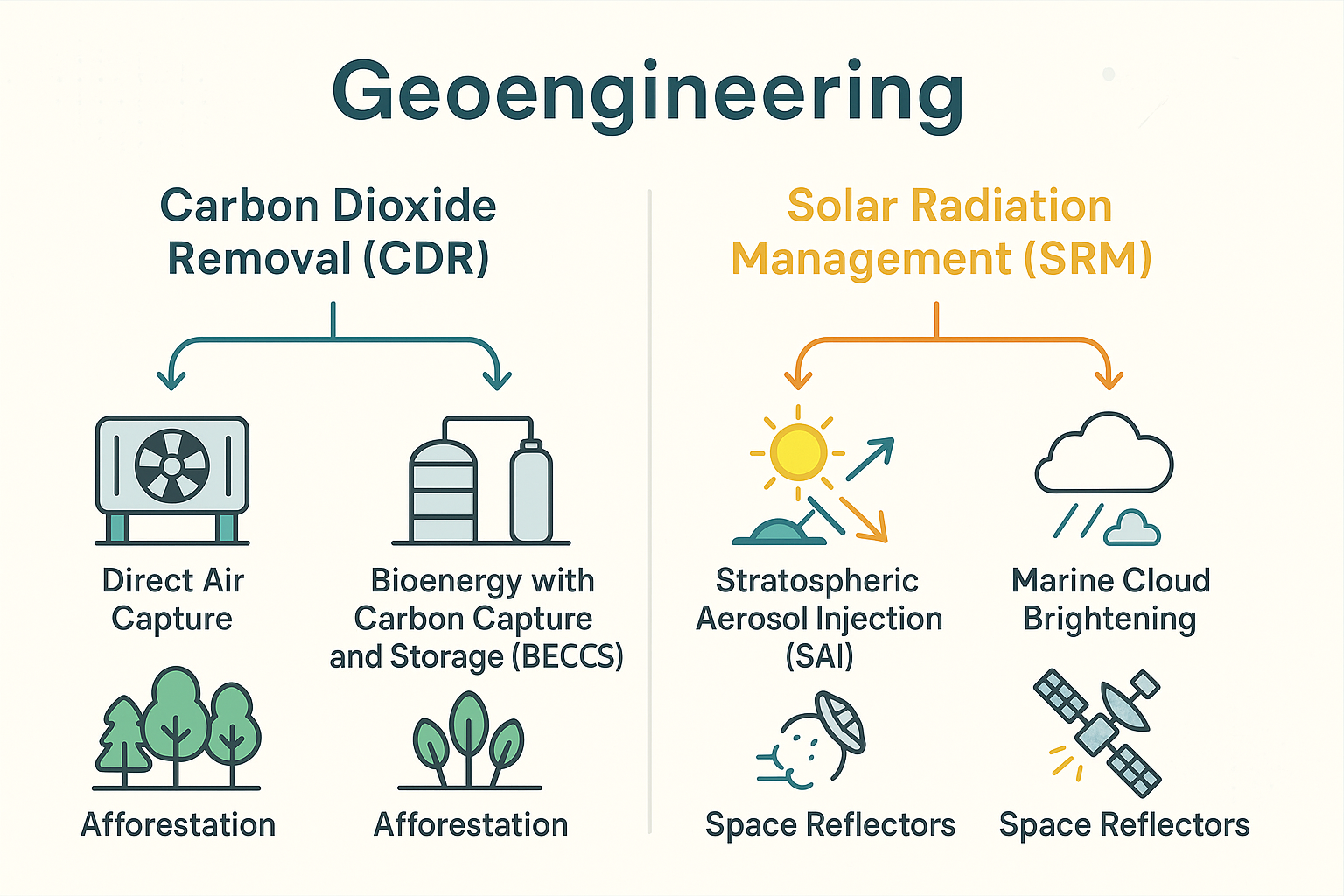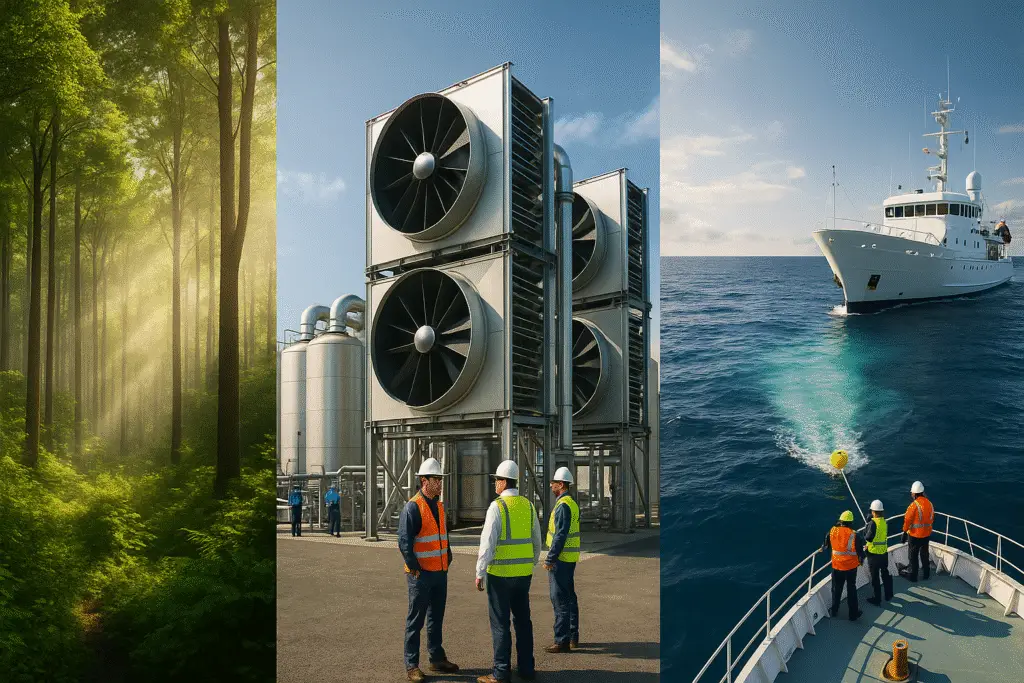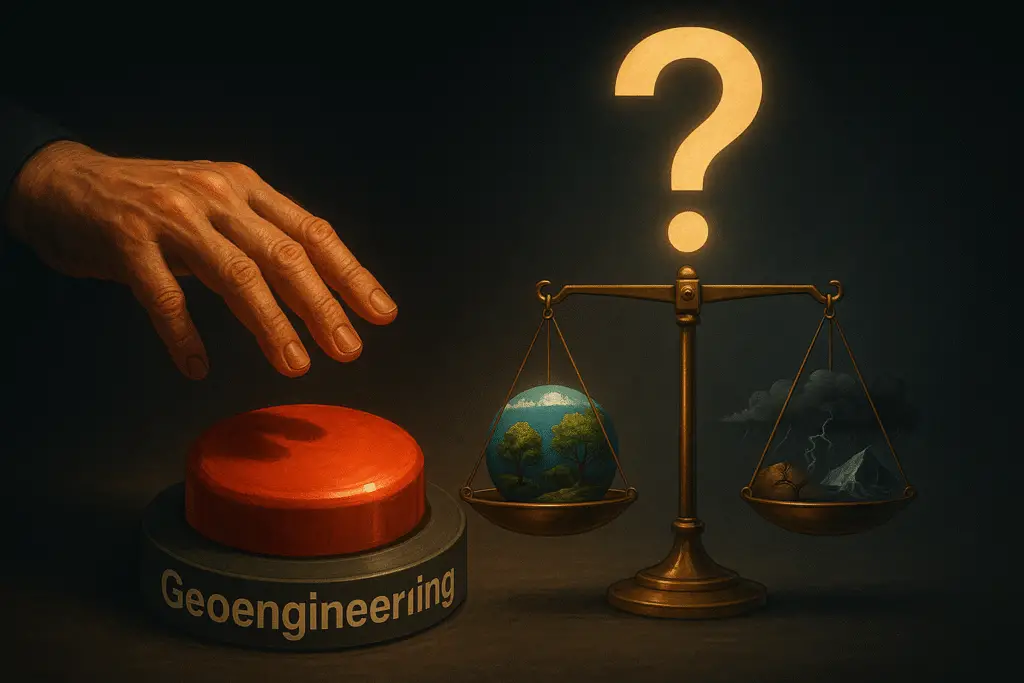The Desperate Gamble – Hacking the Planet to Save It?
With traditional climate change mitigation proving slow, a radical idea gains traction: climate engineering, or geoengineering. This involves large-scale, intentional manipulation of Earth’s climate system to counteract global warming. Born from urgency, it’s a recognition that extraordinary measures might be needed to avert catastrophic environmental collapse. This article explores its proposed techniques, potential benefits, profound ethical quandaries, and significant risks. Are we truly prepared to “hack the planet” as a last resort? The stakes are immense, and the debate is as heated as the planet itself.
What is Climate Engineering? Understanding the Basics
Geoengineering involves deliberate, large-scale interventions in Earth’s natural systems to counter climate change. Its goal is to either reduce solar radiation or remove greenhouse gases. These interventions fall into two main categories:
Solar Radiation Management (SRM) / Solar Geoengineering: Dimming the Sun
SRM aims to reflect sunlight back into space. The most discussed technique is Stratospheric Aerosol Injection (SAI), mimicking volcanic eruptions by spraying reflective particles (e.g., sulfur dioxide) into the stratosphere. This addresses “what is geoengineering in the sky?” and “what geoengineering what are they spraying?” (not “chemtrails”). Another SRM idea is Marine Cloud Brightening, spraying sea salt to make clouds more reflective. SRM offers potential for rapid global cooling but doesn’t address ocean acidification. Risks include regional climate disruption and “termination shock” if deployment stops suddenly.

Carbon Dioxide Removal (CDR) / Greenhouse Gas Removal (GGR): Cleaning the Air
CDR aims to directly remove CO2 from the atmosphere, addressing the root cause. These methods are slower and more expensive but tackle the fundamental problem. Examples include Afforestation and Reforestation (planting trees), Bioenergy with Carbon Capture and Storage (BECCS), Direct Air Capture (DAC) (capturing CO2 from ambient air), Enhanced Weathering (spreading silicate rocks), and Ocean Fertilization (stimulating phytoplankton growth). CDR directly reduces atmospheric CO2 and can offer co-benefits. Challenges include scalability, high costs, land-use conflicts, and potential ecological damage. “Can geoengineering reverse climate change?” is more applicable here, as CDR reduces the greenhouse gas burden directly.

The Pandora’s Box: Ethical Dilemmas and Governance Nightmares
Intentionally manipulating Earth’s climate system opens profound ethical, social, and governance challenges.
Moral Hazard: The Peril of a False Sense of Security
A significant concern is the moral hazard: does the prospect of geoengineering reduce the incentive to cut emissions now? This is the “moral hazard of geoengineering” critics highlight. The fear is geoengineering becomes a dangerous distraction, delaying fundamental societal changes needed for decarbonization.
Equity and Justice: Who Decides, Who Suffers?
Equity and justice are paramount. Who decides on deployment? Unilateral decisions could have profound consequences. Who bears the risks, especially if unintended side effects disproportionately affect vulnerable nations? This relates to “Which countries are geoengineering?” and power imbalances. The potential for disproportionate impacts on developing nations raises serious climate justice concerns.
Unforeseen Consequences: Playing God with the Planet
Earth’s climate is complex. Large-scale interventions could have unpredictable and catastrophic side effects. What if SAI triggers unexpected atmospheric reactions, or ocean fertilization disrupts marine ecosystems? These are concerns behind “How does geoengineering affect the environment/health?” The risk of new, equally severe problems, or even exacerbating existing ones, is a constant specter. The weaponization potential of climate modification is also a chilling thought.
Governance Gap: A Wild West Scenario?
A pressing challenge is the governance gap. There’s no robust international legal framework or oversight. This creates a “wild west” scenario where unilateral actions could lead to disputes or unintended global consequences. Questions like “Is geoengineering legal?” highlight the fragmented legal landscape. Without clear rules, accountability is absent. This lack of global consensus is a major impediment. These dilemmas are central to “Is geoengineering ethical?” and “What are the criticisms of geoengineering?” Geoengineering is a deeply human problem, fraught with moral complexities.

The Current State of Play: Is Geoengineering Happening Now?
It’s crucial to distinguish between research and large-scale deployment. The short answer to “Is geoengineering happening right now?” is no, not at a climate-impacting scale. However, research is underway, from small-scale field experiments to modeling.
Research vs. Deployment: A Critical Distinction
Scientific research is often confused with active climate manipulation. While small-scale experiments (e.g., Harvard SCoPEx) gather data, they don’t alter global climate. CDR technologies are also at pilot or demonstration scales, far from gigaton-level removal. “When did geoengineering start/begin?” is complex; ideas date back decades, but serious discussions began in the early 21st century.
Addressing Misinformation: The “Chemtrails” Conspiracy
Public discourse is polluted by misinformation, notably the “chemtrails” conspiracy. It’s important to clarify that “chemtrails” are not real; they are contrails. Legitimate geoengineering research is transparent. Questions like “geoengineering what are they spraying” often stem from this misinformation, highlighting the need for clear scientific communication.
International Stance and Historical Context
Most governments and international bodies maintain a cautious approach, calling for more research but expressing reservations about deployment. No countries are currently engaged in large-scale, deliberate climate engineering. “Where is geoengineering used/take place?” refers primarily to research facilities and small-scale field tests, not widespread planetary intervention.
The Million-Dollar (or Trillion-Dollar) Question: Can It Actually Work?
The ultimate question is efficacy: can these audacious proposals work at scale? And at what cost?
Technical Feasibility: Scaling Up the Unprecedented
While many techniques are theoretically sound, their technical feasibility at a global scale is largely unproven. Deploying enough SAI or DAC for significant impact requires massive, continuous, and sustainable operations, far beyond current capabilities. The question is not just if it can work, but if it can work at the scale needed and if we can sustain it for centuries.
Effectiveness vs. Side Effects: A Faustian Bargain?
Even if effective, potential for unforeseen and dangerous side effects is a major concern. SRM might cool but disrupt regional weather. It doesn’t address ocean acidification. CDR methods have their own ecological impacts. This is the “Faustian bargain” – solving one problem only to create others, potentially worse. The debate often centers on whether the cure is worse than the disease.
Cost: Who Pays for Planetary Management?
The financial implications are staggering. Initial SRM costs might be low, but continuous deployment, monitoring, and managing side effects would be immense and perpetual. CDR is currently very expensive. “Who pays?” is a significant hurdle. The economic and political complexities of funding and managing such a global endeavor are immense.
Geoengineering vs. Mitigation and Adaptation: A Supplement, Not a Substitute
Consensus: geoengineering is not a replacement for aggressive emissions reductions and robust adaptation. Most experts see it as a potential, risky supplement if traditional mitigation fails. “Can geoengineering reverse climate change” is misleading for SRM, which only masks warming. The focus must remain on decarbonizing. Geoengineering, especially SRM, is a band-aid on a gaping wound, addressing symptoms, not the disease. “Geoengineering vs mitigation” is a false dichotomy; mitigation remains the priority.
Conclusion: Our Planet, Our Choice – A Dangerous Distraction or a Necessary Evil?
The debate around climate engineering is profound. It’s a desperate gamble: intentional manipulation of Earth’s systems to avert a crisis. While the allure of a “fix” is strong, potential for unintended consequences, ethical quagmires, and governance nightmares is immense. Geoengineering is not a silver bullet; it carries profound, irreversible risks. Scientific consensus: rapid emissions reductions are the primary, safest path. Geoengineering, if deployed, would be a testament to our failure to act decisively on emissions. Is it a dangerous distraction, a moral hazard? Or a necessary, terrifying tool if we fail to act? The debate is far from over, and the stakes could not be higher. The choice, ultimately, is ours.
Maybe you also like:
Follow me on:
For more updates, visit: flashpointnews.com.br


